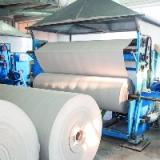Wastewater Odor Control
Control odors to maintain safety and environmental compliance
Odors emitted from industrial and manufacturing facilities have an impact on the environment, the community’s well-being, and your plant worker’s safety and productivity. Many industrial facilities are now facing the challenge of meeting and maintaining compliance with ambient air standards driven by air pollution regulatory agencies and workplace health and safety enforcement organizations.
Veolia provides a comprehensive package of chemical solutions, and operational and engineering recommendations to help manufacturing facilities mitigate or eliminate odor emissions.
Product Highlight
Features & Benefits
Case Studies

ProSweet minimizes odor in a wastewater force main & alleviates community concerns
The strong smell of hydrogen sulfide caused complaints from the surrounding communities.

ProSweet solves odor problems for newsprint mill & improves waste treatment operation
A newsprint mill received complaints from employees and the neighboring community because of H2S generation at their waste treatment facility.

ProSweet product improves working conditions & produces safe sludge for vegetable canning processor
The customer actively sought odor control advice from Veolia.

Cloth dyeing mill reduces H2S costs & complaints with ProSweet products
The effluent of a large cloth dyeing mill was highly loaded with sulfur-bearing dyes.

Veolia vapor phase odor abatement solution reduces costs by 80% vs. competitor’s product
A large Canadian refinery was looking for ways to reduce costs and still control the odor for the wastewater treatment unit.
